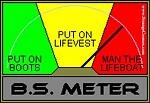Tank maintenance is a long way from rocket science, and the adventure of learning about those 2 will be worth the effort for what you gain. Even if the tanks turn out to absolute junk with internal corrosion and badly cracked necks (not likely) just the calibration of your LDS BS meter will pay of many times in your future diving career.
Well said Fred!
Elonna, as divers we have to learn how to assess information rationally and act accordingly. It's no good knowing what the shops in Florida do if you live in Cincinatti or that some people prefer steel to aluminum. A well maintained and serviced Al 80 can serve you, or someone else, for many many years to come (if the fill issue does not apply to your region).
You have all the info you need to make your decision:
1. Look up the cylinders on the Luxfer list.
2. Circle your numbers, print off the list and, with cylinders in hand, go to your LDS (the one you will use regularily) and ask if they will fill the cylinder if properly serviced.
3. If they say yes, get
them to service the cylinders (they will feel a lot better if they control the inspection).
4. If they say no, listen and consider their reasoning.
It may be that the tanks are corroded or damaged or that shops in your area will give you an unending battle over older tanks... or it may be that those tanks are fine and will be readily filled.
If they reject the cylinders out of hand you at least know the state of critical thinking in that shop. It may be the same shop that tells you you need new hoses when a 1 cent O ring will do or that your regs should be replaced because they have scratches on the dust cover.
Dive them or don't dive them, it's up to you but remember:
the retail dive industries survival is based on convincing the consumer that the bomb proof, very safe, long lasting gear they own is in need of constant replacing.
The odds of a 6351 tank letting go due to SLC (about 12 in 25 million).
The odds of a properly maintained and serviced 6351 tank letting go (so far 0).
The odds of you dying in a car accident (about 1 in 83).
The odds of an older 6061 tank letting go due to SLC (so far 0).




